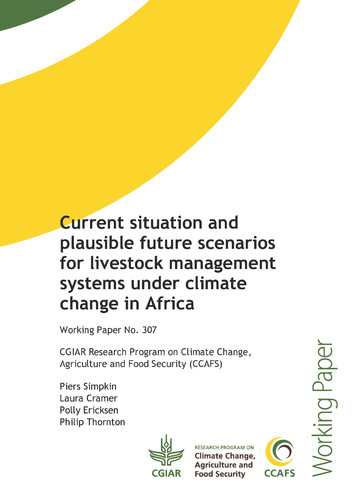Current situation and plausible future scenarios for livestock management systems under climate change in Africa
Abstract
The aim of this study is to review the literature and provide a technical brief to the African Group of Negotiators Experts Support (AGNES) on the effect of climate change on livestock across the continent up to 2050, highlighting the adaptation needs and options. The report provides a brief description of: (i) the different livestock farming classification systems; (ii) the key challenges and impact of climate change on livestock and the farming systems; (iii) the likely future trends and scenarios; (iv) the top adaptation actions that can be taken and (v) their enablers and barriers to uptake. The report also addresses adaptation co-benefits, gender and youth, and traditional knowledge and institutions. It looks at knowledge gaps and how global trends may influence the livestock industry in Africa.
There is evidence that land surface temperatures are rising faster across Africa than in any other continent and that climate variability is increasing. The report emphasizes that coping with climate variability is as big a challenge as coping with climate change. It is agreed that there is considerable variation in the projections between different models, and it is difficult to accurately or confidently project exactly what the future holds. The challenges identified include: (i) the decline in quality and quantity of animal feeds and forage; (ii) a reduction in water availability; (iii) heat stress; (iv) biodiversity change; (v) changes in the distribution and occurrence of livestock pests and diseases; and (vi) increased livelihood and income vulnerability affecting food security, purchasing power and resilience.
Potential adaptation responses include: (i) migration of both people and livestock, including urbanization and education of the population; (ii) improving water conservation; (iii) increasing intensification and shifting to mixed crop-livestock farming; (iv) pasture reseeding and conservation; (v) improving early warning, risk management and the use of technology; (vi) diversification both within livestock keeping with cross-breeding or changing herd species composition, and diversification out of livestock and agriculture into other livelihoods; and (vii) improved hygiene and quarantines to combat disease threats.
Activities and interventions providing adaptation co-benefits are: (i) climate smart and conservation agriculture; (ii) improved natural resource and sustainable rangeland management; (iii) biodiversity and ecosystem services; (iv) agroecology; (v) sustainable intensification; (vi) reducing methane emissions; (vii) policy change and enabling environments; and (viii) market opportunities and diversification. National priorities and local contexts must guide any response planning.

